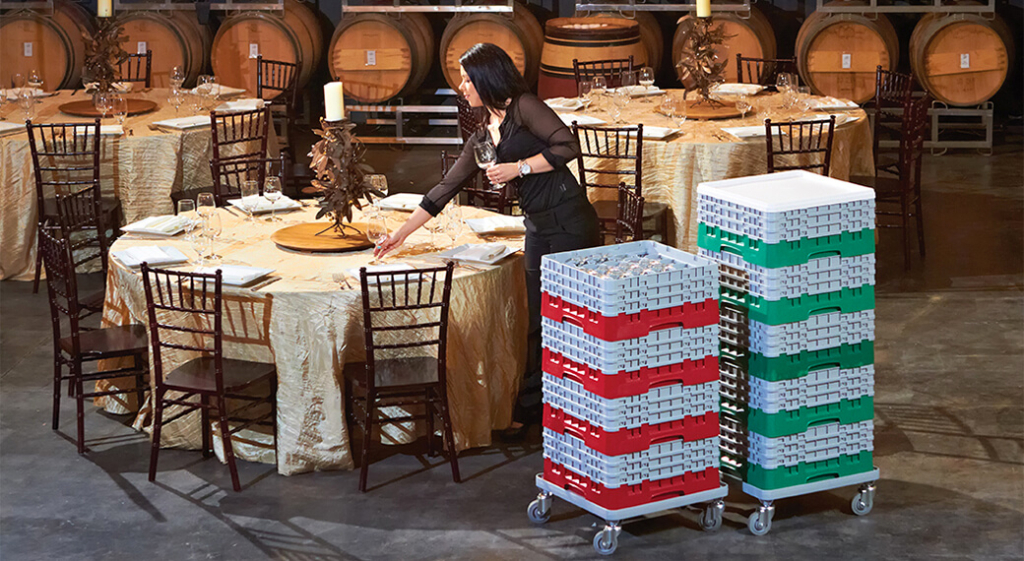Foodservice carts keep the restaurant and hospitality industries moving. However, shopping for them can stop you in your tracks. Our guide to foodservice carts will help you streamline your decision-making process.
We outline six types of foodservice carts, their features, functions, and benefits, and additional considerations to look out for during your selection process. We will also show you examples of different kinds of carts to highlight the diversity of features available.
Purchase the Right Foodservice Carts for Your Operation
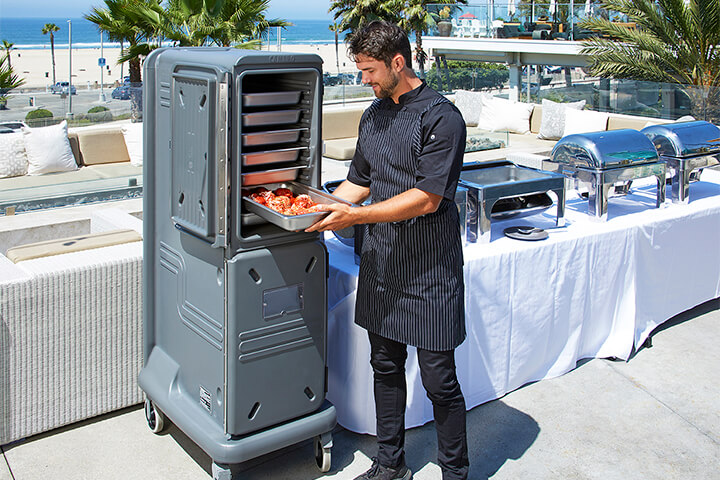
Before purchasing foodservice carts, carefully consider their usage and apply that to your decision. For instance, figure out the answers to questions like the following, to help solidify the qualities you’ll need:
- How heavy are the items you’ll be transporting?
- Is this cart for daily use or will it spend a lot of time in storage?
- If the cart is for daily use, are the handles ergonomic?
- How much durability do you require?
- Will this cart be exposed to chemicals, water, travel, or the outdoors, and does your choice of material support that environment?
Next, we present a breakdown of the different kinds of foodservice carts including their primary uses, functionalities, and features to consider when choosing the right one for your establishment. But first, we will share some useful information about the best kind of casters to purchase.
Casters
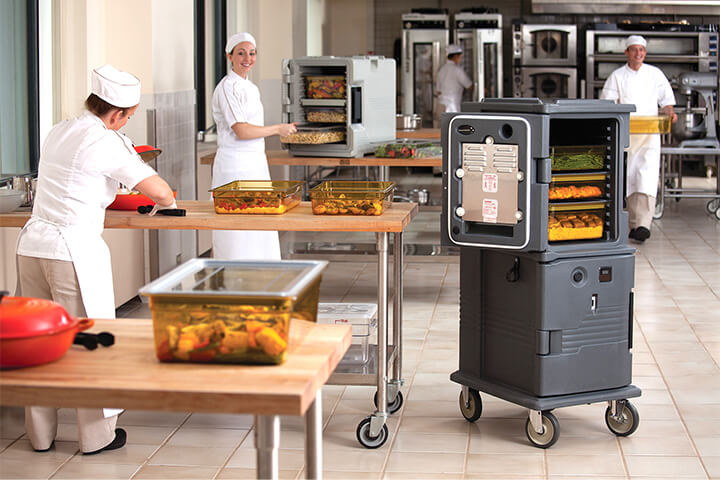
In general, the bigger the wheel, the fewer bumps you and the items you’re transporting will feel. The most durable casters are stainless steel with rubber around the wheel. Stainless steel is much stronger than plastic wheels, so your investment will be sturdier and longer lasting. The rubber casing provides tread, absorbs shock, creates a quieter wheel for your guest-facing areas, and protects your flooring.
Casters also attach to the units using stems or brackets. Stems are more user friendly because they fit directly inside the base housing, while bracket casters require tools to assemble.
Bussing Carts
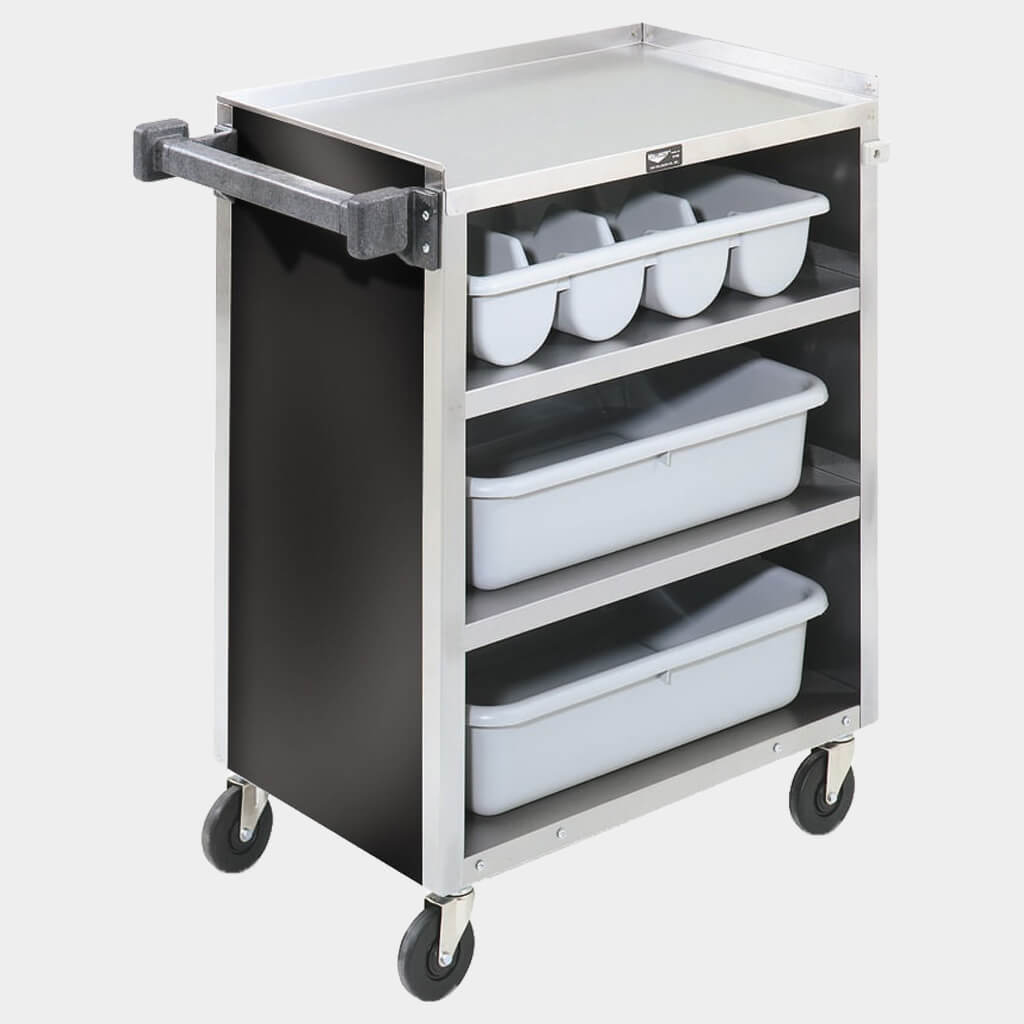
Bussing carts collect dirty dishes, flatware, and glassware from tables after each service. They are designed for quick turnaround times and offer multiple flat shelves for stacking used dishes. Since bussing carts are always on the move, high-quality models feature sturdy construction to handle the wear and tear of constant use.
Bussing carts are designed to hold and transport bus boxes, also called bus bins or tubs. These bins efficiently consolidate dirty dishes for a single trip to the dishwashing area. Choose a cart with shelves that accommodate the size of your bus boxes. If bus boxes aren’t snug and secure in your bussing cart, delicate dishes could break or boxes may rattle around and disturb guests. Standard bussing carts have shelves sized to accommodate bus tubs, typically 21″ x 32″. However, variations exist, so ensure compatibility with your existing bus boxes.
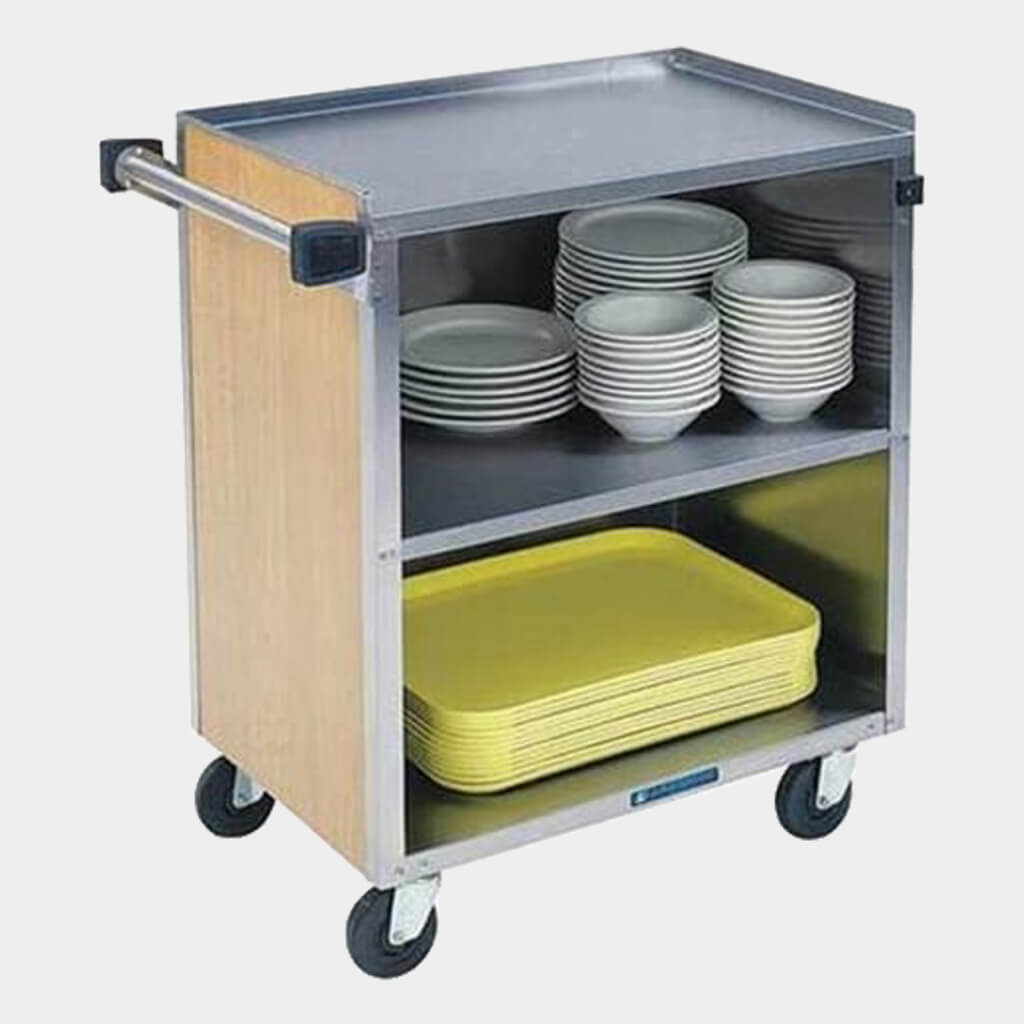
Additional Features and Considerations When Selecting Bussing Carts:
- Material: Stainless steel is the industry standard, offering durability, ease of cleaning, and resistance to corrosion. Consider plastic options for a more budget-friendly choice, but be mindful of potential weight limitations and a higher chance of scratches or cracks.
- Number of Shelves: Two, three, and four shelves are typical, allowing for efficient sorting and stacking of used dishes.
- Maneuverability: Look for swivel casters with non-marking wheels for smooth navigation through tight spaces. For additional stability while loading and unloading, purchase at least two casters with brakes.
- Enclosed vs. Open: Enclosed busser carts help conceal dirty dishes from guests, maintaining a more aesthetically pleasing front-of-house presentation. Open bussing carts offer easier access and unloading. Some bussing carts feature one closed, guest-facing side to shield guests from unsightly dishes, and one open side.
Utility Carts
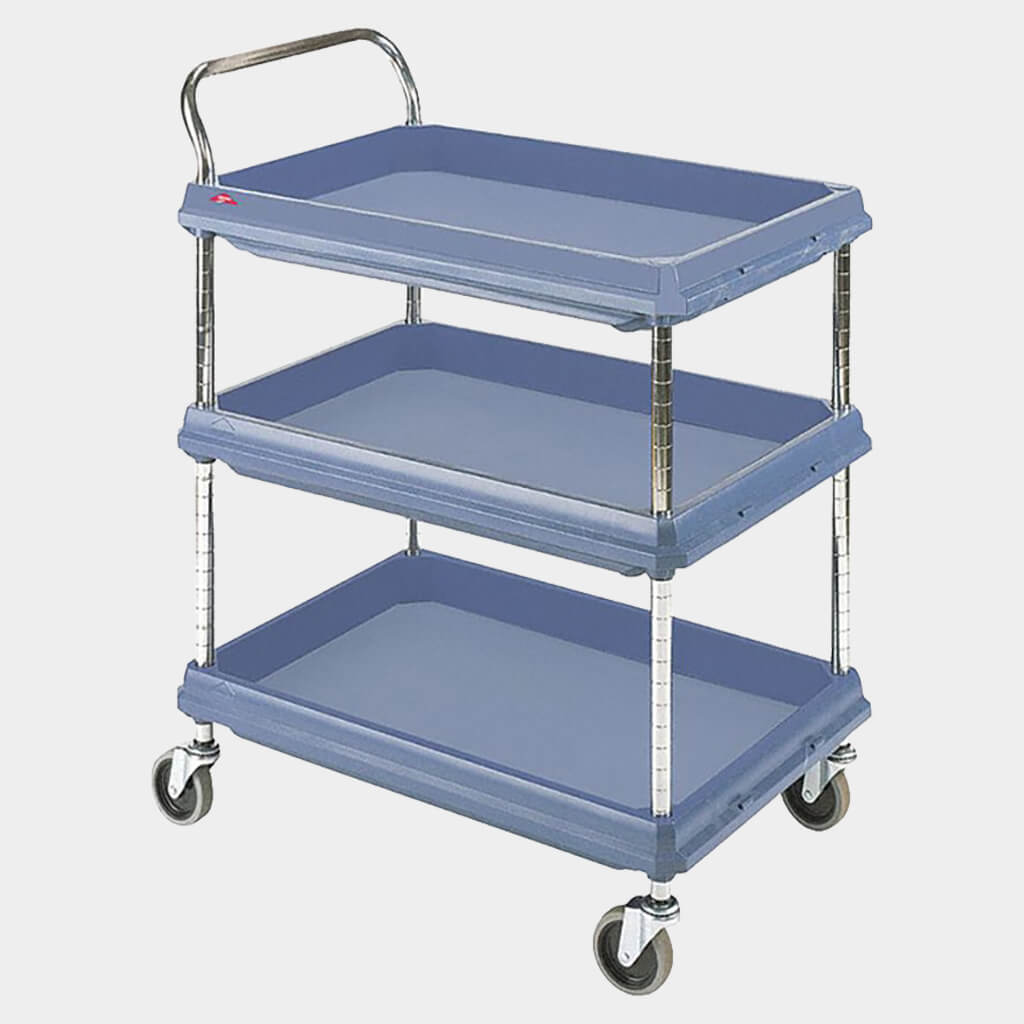
True to their name, utility carts are useful and practical tools for transporting a wide range of items. Before you purchase a utility cart, first identify its intended purpose. For instance, if you’re using one as a backup bussing cart, you will need a strong, heavy-duty build. If the cart will be used primarily for transporting prep items or small equipment, a lighter-duty option will work.

They typically feature multiple shelves, with some having solid or perforated options depending on the intended use. Select a cart with enough shelf space to accommodate your needs without creating an overloaded, unstable situation. Opt for a three-shelf model for the most versatility.
Other Considerations When Choosing a Utility Cart:
- Material: Stainless steel is again the preferred choice for durability and sanitation. They’re easy to clean with daily wipes or sprays. Plastic carts offer a cost-effective alternative for lighter weight applications.
- Shelf Size and Weight Capacity: Consider the size and weight of the items you plan to transport. Standard utility cart shelves can range from 18″ x 24″ to 36″ x 24″ with weight capacities varying from 300 lb. to 600 lb. or more.
- Shelf Lips: Shelves with built-in lips help prevent items from sliding or falling during transport.
- Casters: Like bussing carts, swivel casters with brakes are ideal for maneuverability and safety.
Dish and Tray Carts
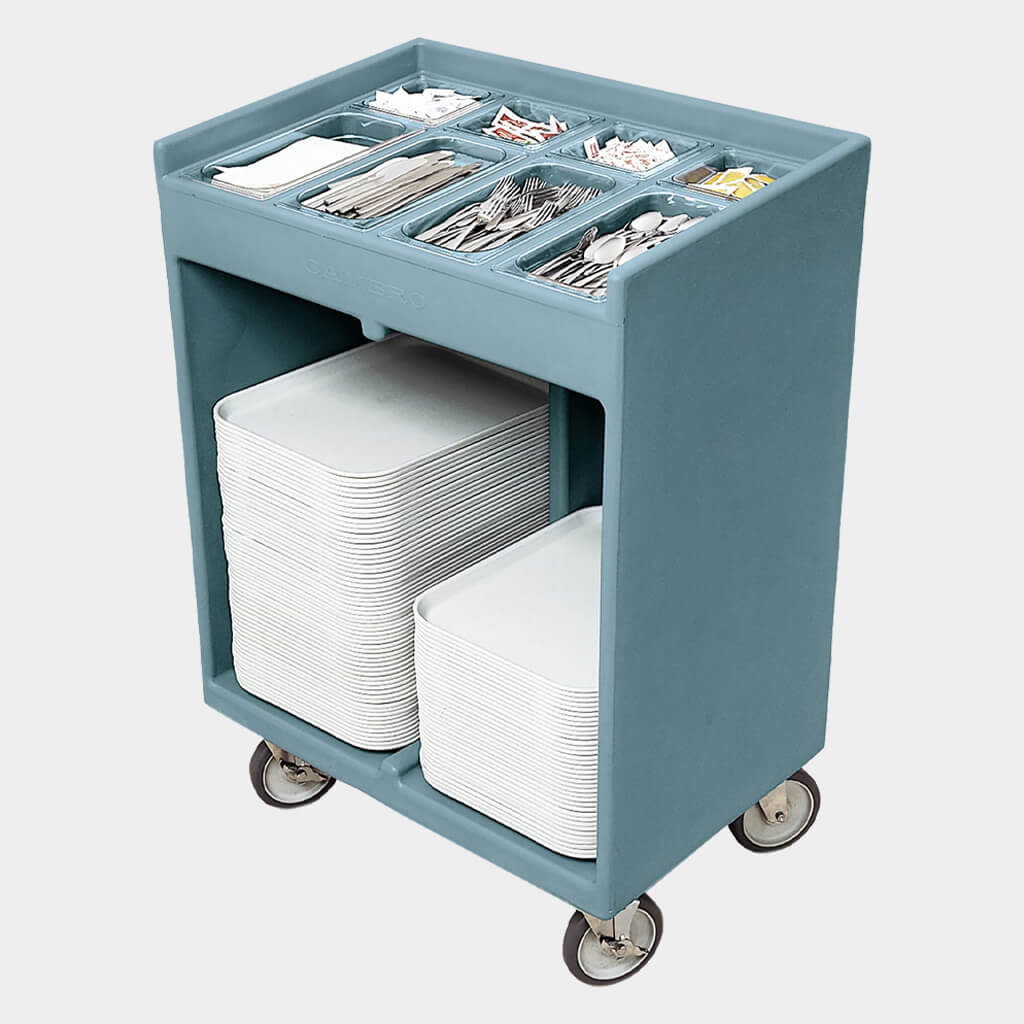
and is NSF listed.
Dish and tray carts transport clean dinnerware for service. Since much of our dinnerware supplies are fragile, dish and tray carts accommodate holding equipment for dishes, flatware, and glassware.
To further protect their precious cargo, dish and tray carts require high-quality, heavy-duty casters that absorb shock and roll smoothly.
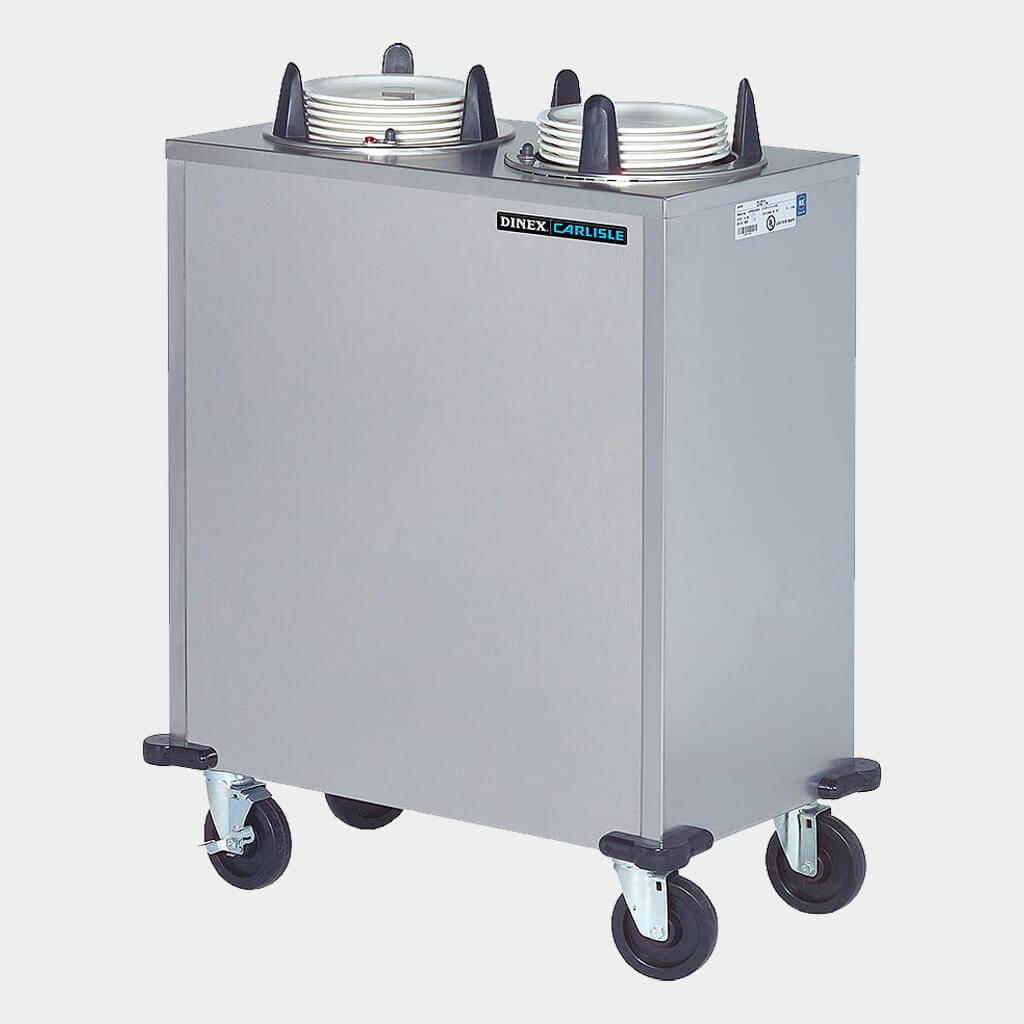
Additional Factors to Consider When Selecting Dish and Tray Carts:
- Material: Stainless steel is the preferred material for its durability and ability to withstand the high temperatures and harsh cleaning chemicals used in dishwashing areas. Stainless steel is also presentable in guest-facing environments.
- Shelf Design: Look for shelves designed to securely hold loaded dish racks. Some carts may have angled shelves for proper drainage.
- Casters: Heavy-duty casters with brakes are essential to support the weight of loaded dish racks and ensure safe maneuvering in wet environments.
Insulated Food Carts
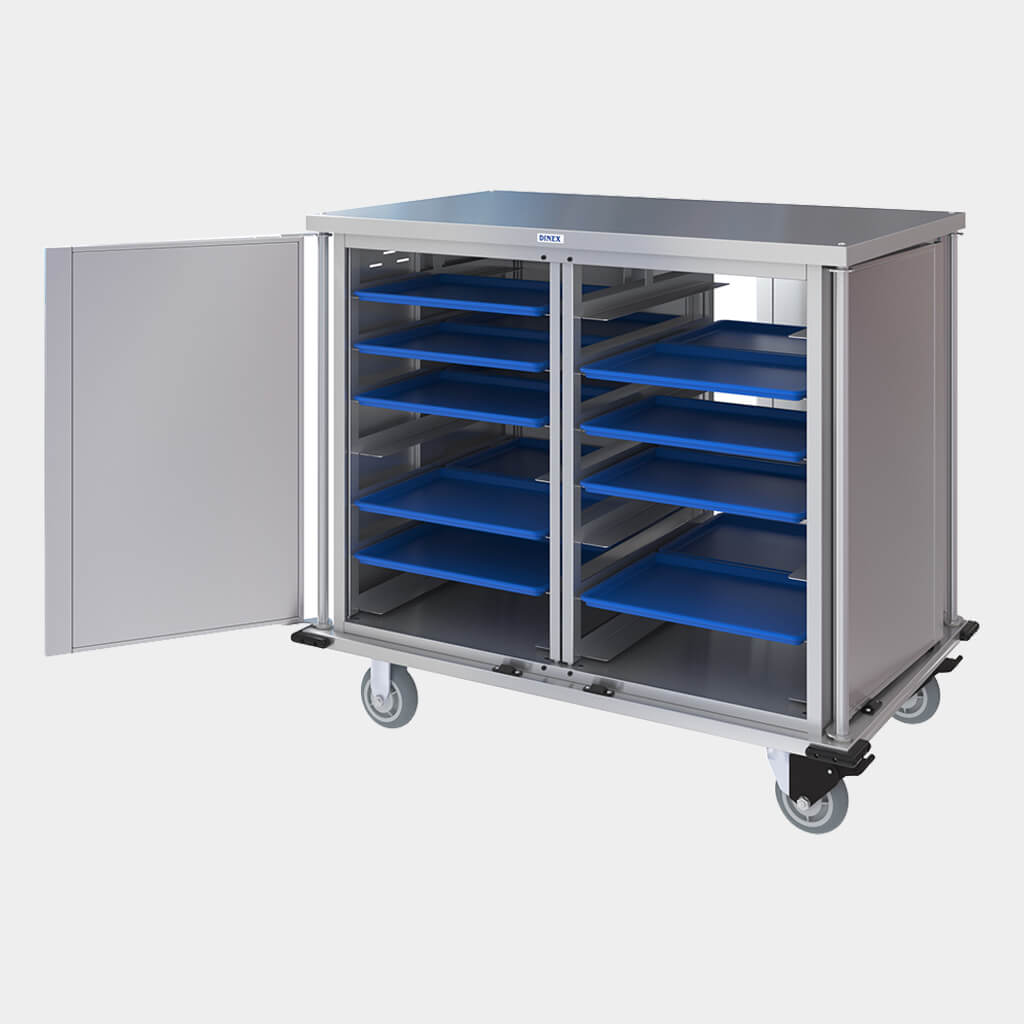
Insulated food carts transport temperature-sensitive foods safely and efficiently. They are ideal for catering events, off-site deliveries, transporting meals in hospitals and hotels, or maintaining food temperature during prep work or holding stages.
The key to choosing the perfect insulated cart is to understand your holding times. Electric carts are ideal for maintaining safe food temperatures during long periods, like catering events or banquets. Non-electric options work well for short-distance hot or cold food transport from the kitchen to the serving area.
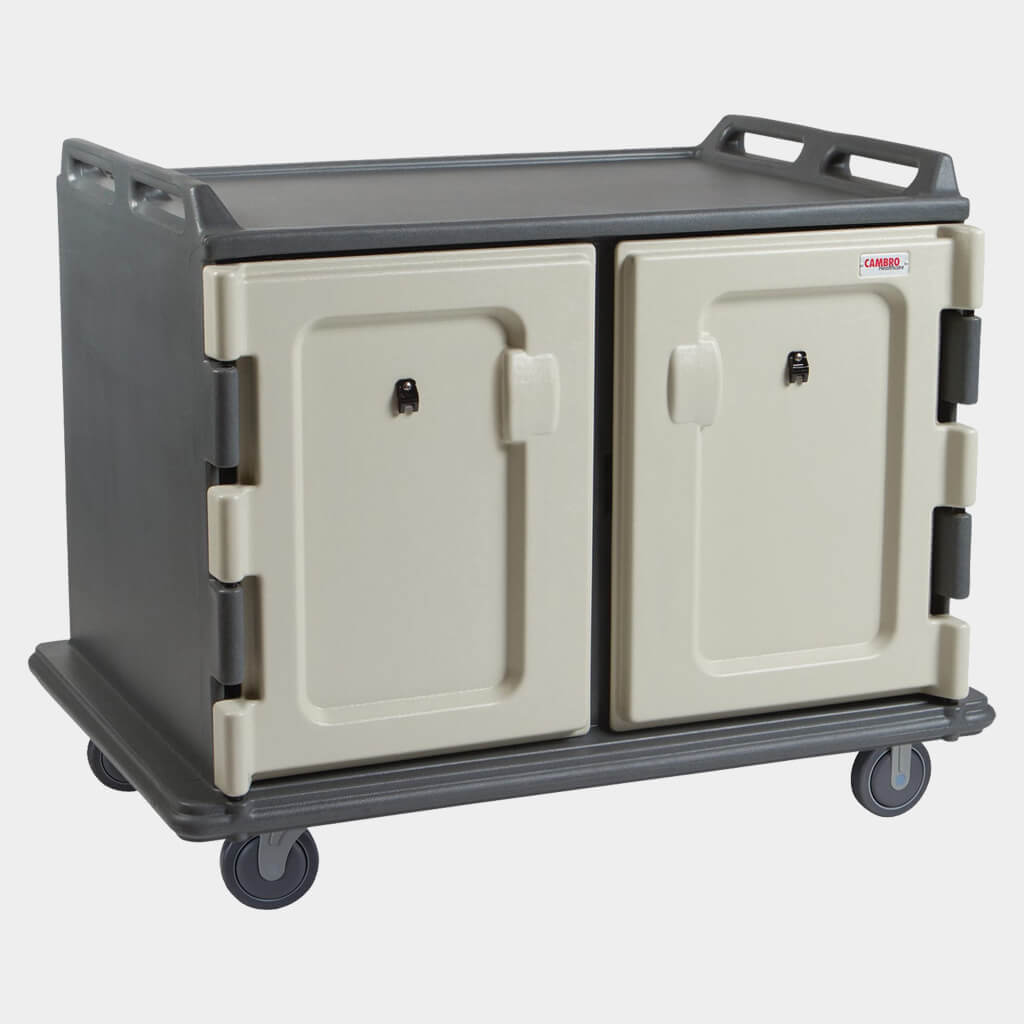
Other Considerations When Choosing Insulated Food Carts:
- Doors and Access: Consider the type of door access that best suits your needs. Options include hinged doors, swinging doors, or self-closing lids.
- Gaskets: Carts should have tight-fitting, replaceable gaskets on doors and lids to maintain proper temperature control.
- Casters: Heavy-duty casters are essential, especially for larger carts, to handle the weight and ensure smooth maneuverability.
Service Carts
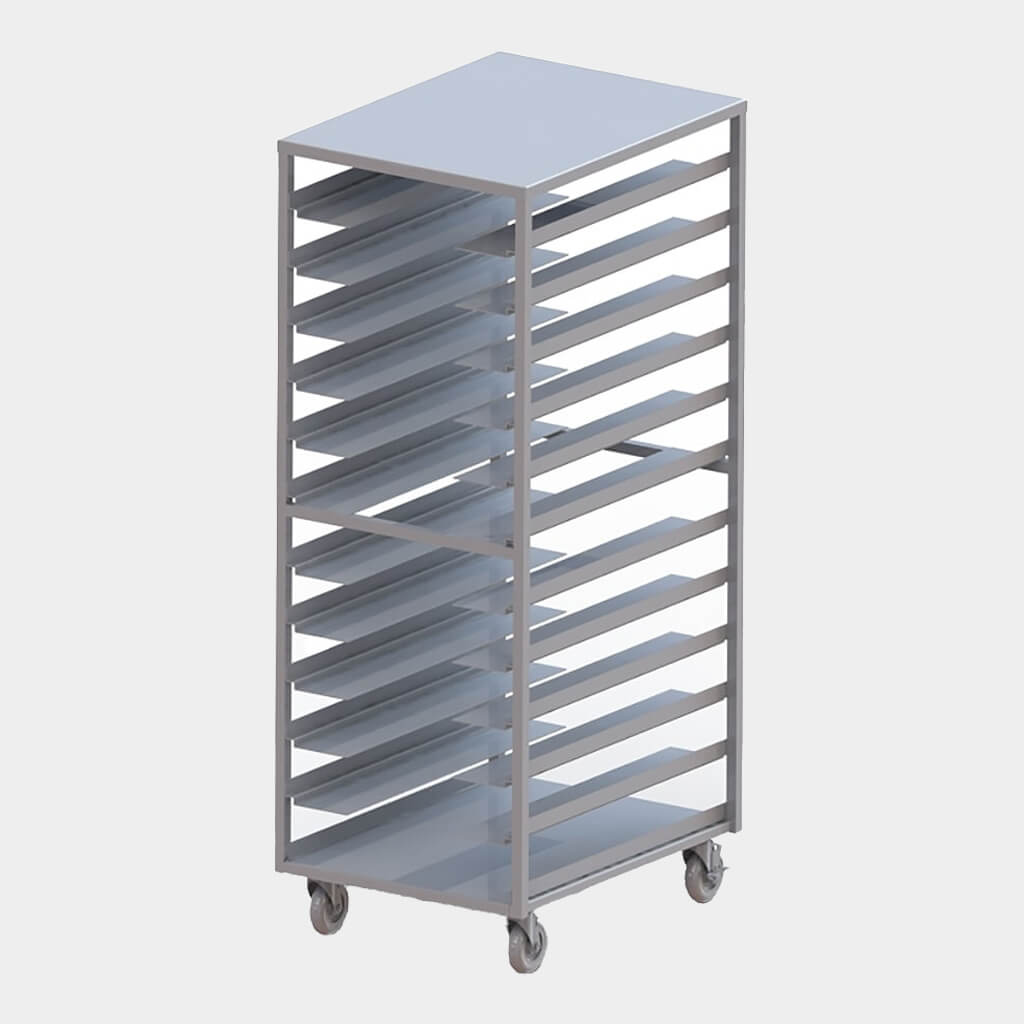
Service carts always put their best face forward. Used for tasks that are in full view of guests, service carts should maintain a shiny, polished, and professional look. After all, these carts are an extension of your brand. Consider wood finishes, laminates, or even painted options to match your dining room’s décor or your brand colors. For a high-end establishment, polished stainless steel service carts with sleek lines blend in seamlessly.
For room service operations, maneuverability is key. Look for compact, two-shelf carts with swivel casters for tight corners. Make sure some of the casters have breaks to keep carts from rolling away. Perhaps most importantly, a silent, smooth ride is crucial to avoid disturbing guests. Consider carts with rubberized wheels or sound dampeners to reduce noise.
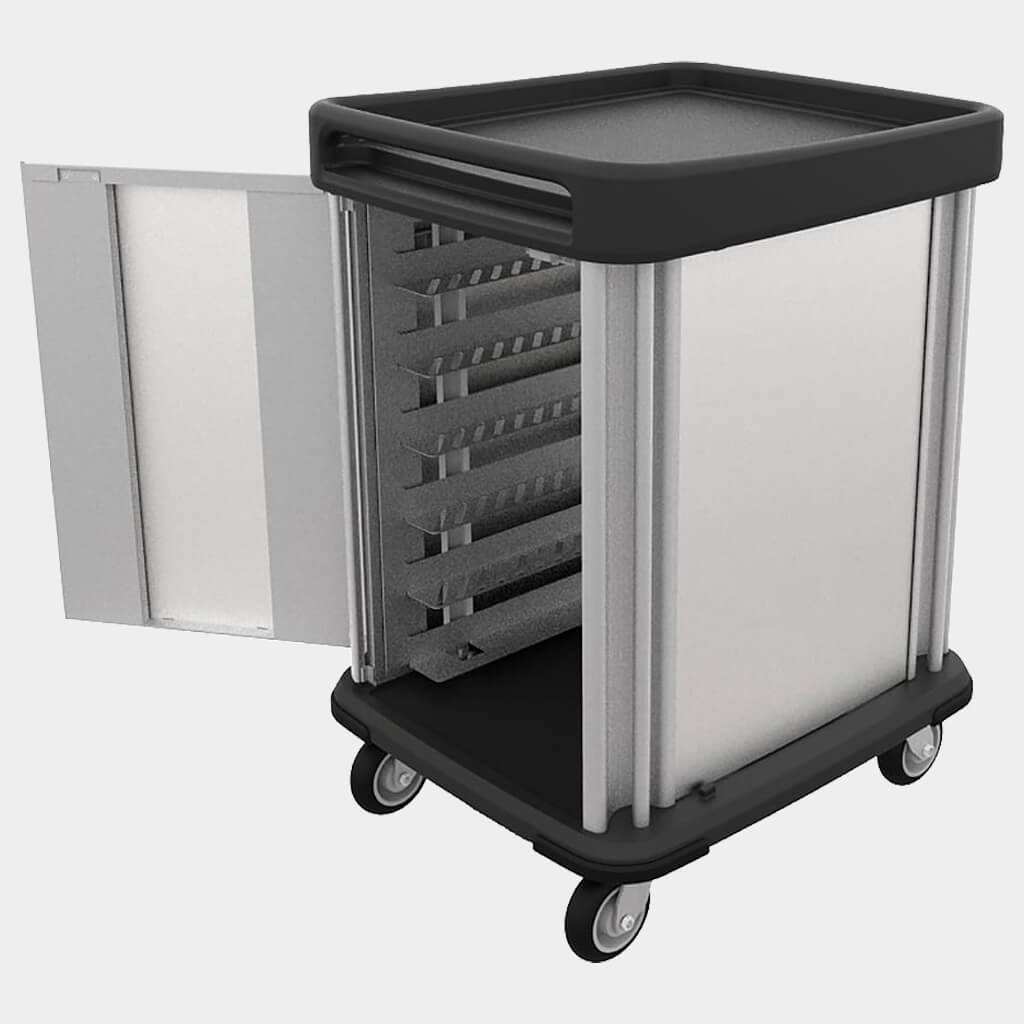
Other Considerations When Shopping for Service Carts:
- Lip on Shelves: A lip around the edges of the shelves helps prevent items from falling off during transport.
- Push Handles: Ergonomic push handles are essential for staff to easily move the cart and reduce muscle strain.
- Weight Capacity: Ensure the cart can support the weight you typically need to move. Standard carts can handle 200-300 lb., but heavy-duty models can accommodate up to 500 lb.
- Shelf Size: The shelf size should be appropriate for the items you plan to transport. Standard shelf sizes are 18″ x 24″ or 24″ x 36″.
Lug Carts

Lug carts are built for heavy-duty tasks like transporting large items or significant quantities of supplies. They are ideal for bulk food deliveries, transporting heavy equipment, or managing waste removal. Like bussing and utility carts, however, they can play other roles in a pinch. Depending on their usage, ensure you have enough lug carts for a smooth workflow, without too much redundancy.
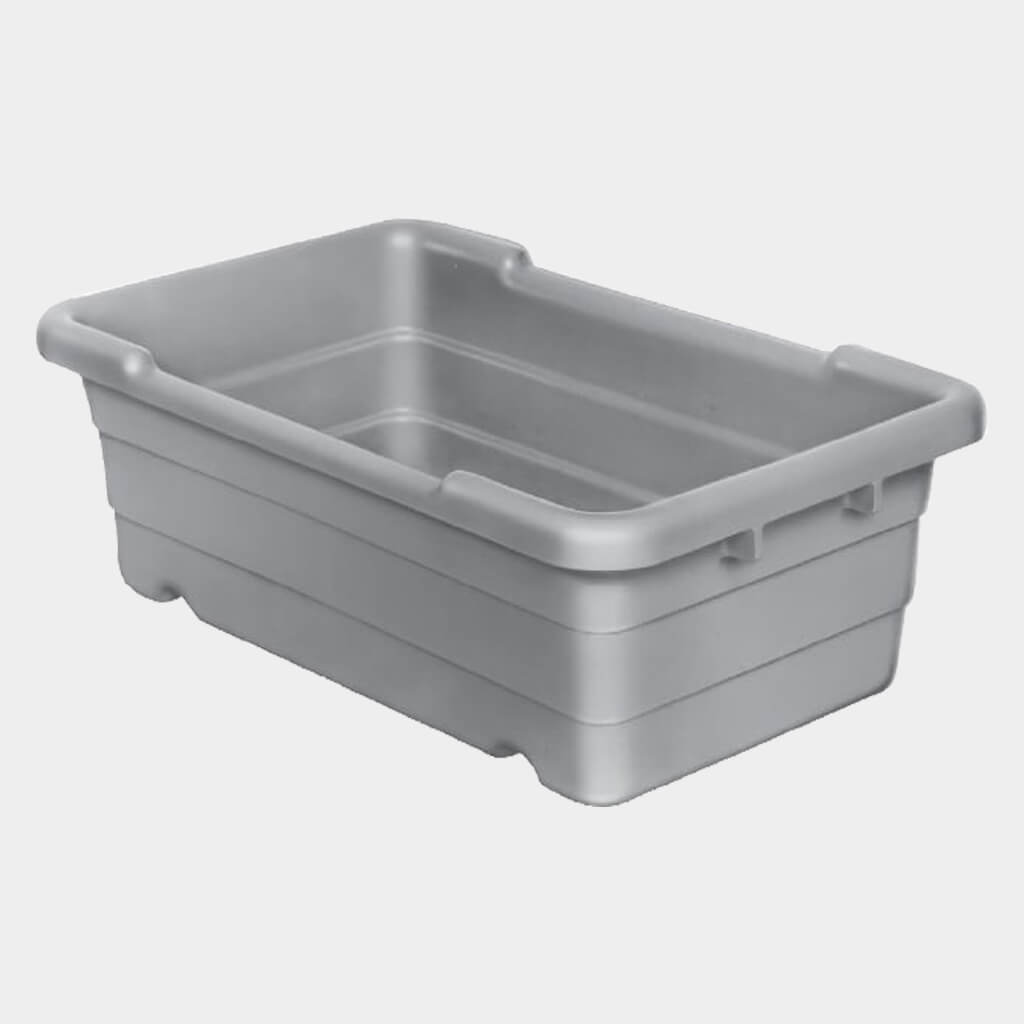
Key Considerations When Choosing Lug Carts:
- Casters: Prioritize strong casters that can handle heavy loads. Heavy-duty casters with brakes are essential for maximum weight capacity and safe maneuvering.
- Material: Stainless steel is preferred for durability, with some carts featuring reinforced frames for maximum weight capacity.
- Size and Capacity: Lug carts come in various sizes, with some capable of handling loads exceeding 1,000 lb. Choose a cart size that accommodates your heaviest and bulkiest loads.
- Shelf or Platform Design: Some lug carts have flat platforms, while others offer shelf configurations. Select the design that best suits the type of items you typically transport.
Foodservice Carts: Gotta Catch ‘Em All
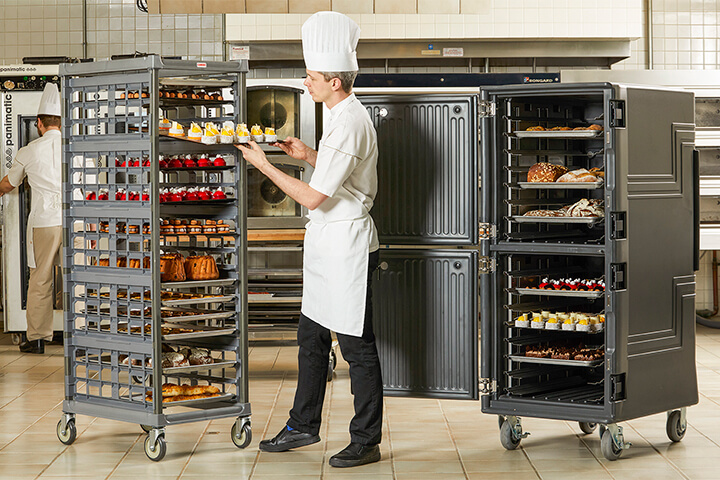
Each type of cart we’ve discussed plays an important part in keeping our operations running smoothly. Foodservice carts significantly impact the efficiency and functionality of your operation, so invest wisely. By understanding the different types of carts available and carefully considering the factors outlined in this guide, you can select the perfect options to optimize your foodservice operation.

